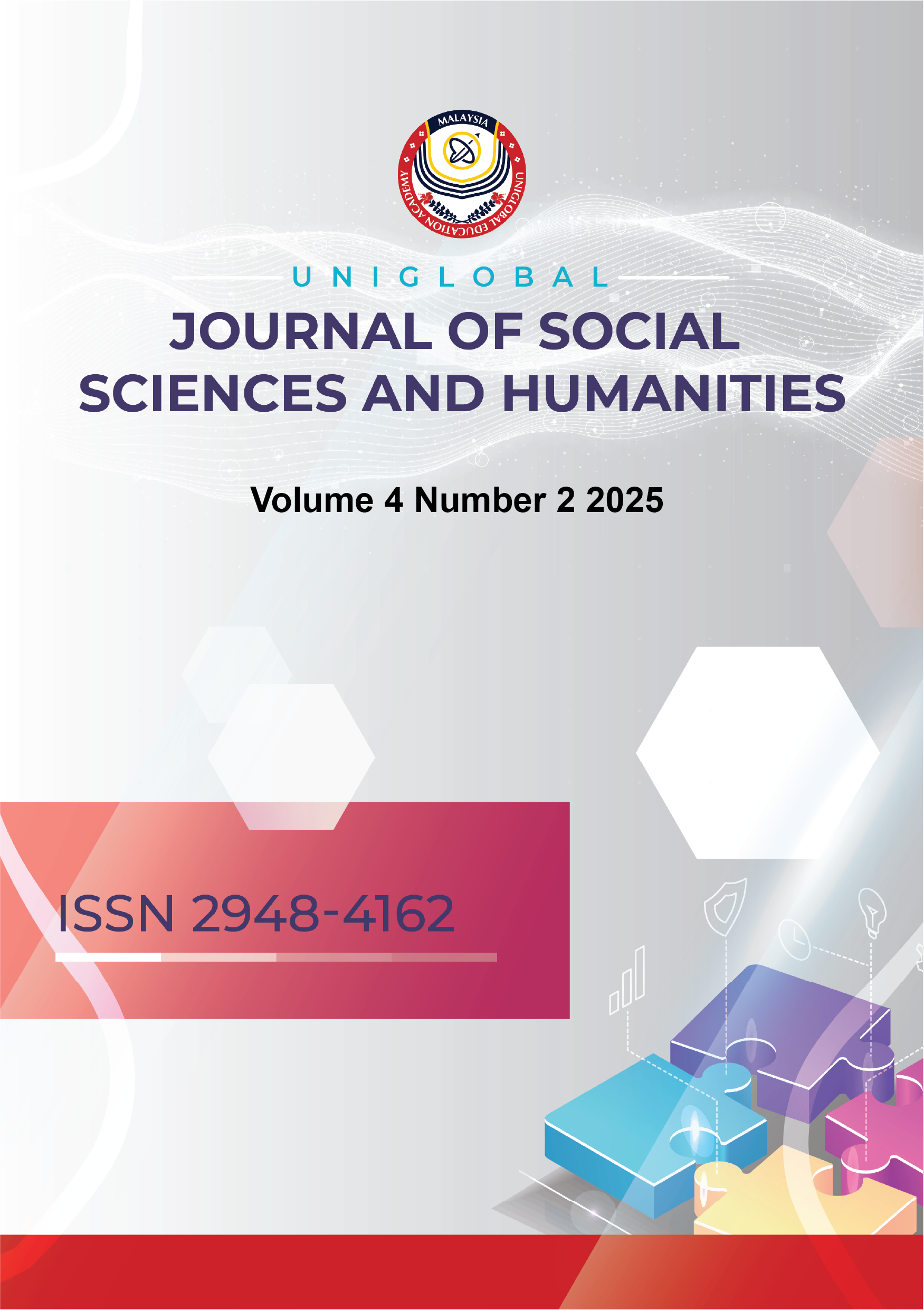Examining the Role of Artifical Intelligence in Enhancing Adapted Physical Education (APE) in Universities in Harbin, Heilongjiang, China
DOI:
https://doi.org/10.53797/ujssh.v4i2.13.2025Keywords:
Artificial intelligence, adapted physical education, inclusive education, intelligent health information systems, structural equation modelingAbstract
This study investigated the relationships between Physical Disabilities of Chinese students in APE, Intelligent Health Information Systems (IHIS), and various AI technologies including Machine Learning (ML), Artificial Neural Networks (ANN), Natural Language Processing (NLP), Deep Learning (DL), and Bayesian Networks (BN) to determine how AI can enhance adaptive physical education effectiveness. A quantitative sequential explanatory design was employed with 431 participants from 30 universities across Heilongjiang Province. Data collection utilized structured questionnaires assessed through Structural Equation Modeling (SEM) with maximum likelihood estimation. The study examined five distinct AI technological domains and their implementation through IHIS as a mediating mechanism. A strong positive effect was demonstrated between Physical Disabilities and IHIS (β = 0.924, p < .001).. Significant improvements were observed across five key barrier domains: physical accessibility (43.7%), communication barriers (51.2%), instructional differentiation (47.6%), assessment adaptability (39.8%), and social inclusion (32.4%). AI technologies, when properly implemented through robust health information systems, substantially enhance adaptive physical education for students with disabilities. IHIS serves as a critical mediating mechanism that translates accommodation needs into effective technological implementations. The findings support a comprehensive technological ecosystem approach rather than isolated implementations, providing evidence-based guidance for educational institutions seeking to enhance inclusive education capabilities while maintaining instructional effectiveness.
References
An, J. (2021). Learning to teach students with disabilities through community service-learning: Physical education preservice teachers’ experiences. International Journal of Disability, Development and Education, 68(3), 442-455.
Ball, L., Lieberman, L. J., & Haibach-Beach, P. (2021). Check Your Fear at the Door: Allowing Students With Disabilities the “Dignity of Risk” in Physical Education. Journal of Physical Education, Recreation & Dance, 92(6), 57–59. https://doi.org/10.1080/07303084.2021.1936872
Block, M. E., Haegele, J., Kelly, L., & Obrusnikova, I. (2021). Exploring future research in adapted physical education. Research Quarterly for Exercise and Sport, 92(3), 429-442.
Ketcheson, L., Felzer-Kim, I. T., & Hauck, J. L. (2021). Promoting adapted physical activity regardless of language ability in young children with autism spectrum disorder. Research quarterly for exercise and sport, 92(4), 813-823.
Kim, M., Santiago, J. A., Park, C. W., & Kim, M. J. (2022). Adapted physical education teaching online during COVID-19: experiences from the south of the United States. International Journal of Disability, Development and Education, 69(1), 239-252.
Ku, B., Case, L., & Sung, M.-C. (2021). Promoting Parent–Teacher Communication Within Adapted Physical Education Using the Media Richness Theory. Journal of Physical Education, Recreation & Dance, 92(8), 15–20. https://doi.org/10.1080/07303084.2021.1962447
Kwon, E. H., & Block, M. E. (2017). Implementing the adapted physical education E-learning program into physical education teacher education program. Research in Developmental Disabilities, 69, 18–29. https://doi.org/10.1016/j.ridd.2017.07.001
Mahendra, A., Budiman, D., Stephani, M. R., Suntoda, A., Budiana, D., Lubay, L. H., ... & Nugroho, W. A. (2020). Adaptive Physical Education Teachers' Profile in Indonesia: The Opportunity of Improving Adaptive Physical Education Status. TEGAR: Journal of Teaching Physical Education in Elementary School, 4(1), 11-18.
McNamara, S. W., Colombo-Dougovito, A. M., Weiner, B., & Ahrens, C. (2021). Adapted physical educators’ perspectives of educational research. Research Quarterly for Exercise and Sport, 92(3), 339-351. https://doi.org/10.1080/02701367.2020.1732858
McNamara, S. W. T., Trujillo-Jenks, L., Dillon, S., Healy, S., & Becker, K. (2020). Special Education Administrators’ Knowledge of Adapted Physical Education: A Pilot Study. International Journal of Disability, Development and Education, 1–12. https://doi.org/10.1080/1034912x.2020.1776850
Mcnamara, S., Dillon, S., Becker, K., Healy, S., & Trujillo-Jenks, L. (2020). The Impact of Podcasts on Special Education Administrators’ Understanding of Adapted Physical Education Services. International Journal of Disability, Development and Education, 1–17. https://doi.org/10.1080/1034912x.2020.1731437
Mcnamara, S., & Pan, C.-C. (2019). Adapted Physical Education in the Special Education Process. Advances in Early Childhood and K-12 Education, 61–85. https://doi.org/10.4018/978-1-7998-1431-3.ch004
Richards, K. A., Holland, S. K., Wilson, W. J., Trad, A. M., & Stearns, J. (2023). A qualitative inquiry into the workplace experiences of adapted physical education teachers. Sport, Education and Society, 28(3), 300-312. Yılmaz, S. H., Yarımkaya, E., & Ilhan, E. L. (2024). Physical education teachers’ experiences regarding online physical education lessons for children with autism spectrum disorder. International Journal of Developmental Disabilities, 70(4), 615-624.
Downloads
Published
How to Cite
Issue
Section
License
Copyright (c) 2025 Renping Li

This work is licensed under a Creative Commons Attribution-NonCommercial-ShareAlike 4.0 International License.



